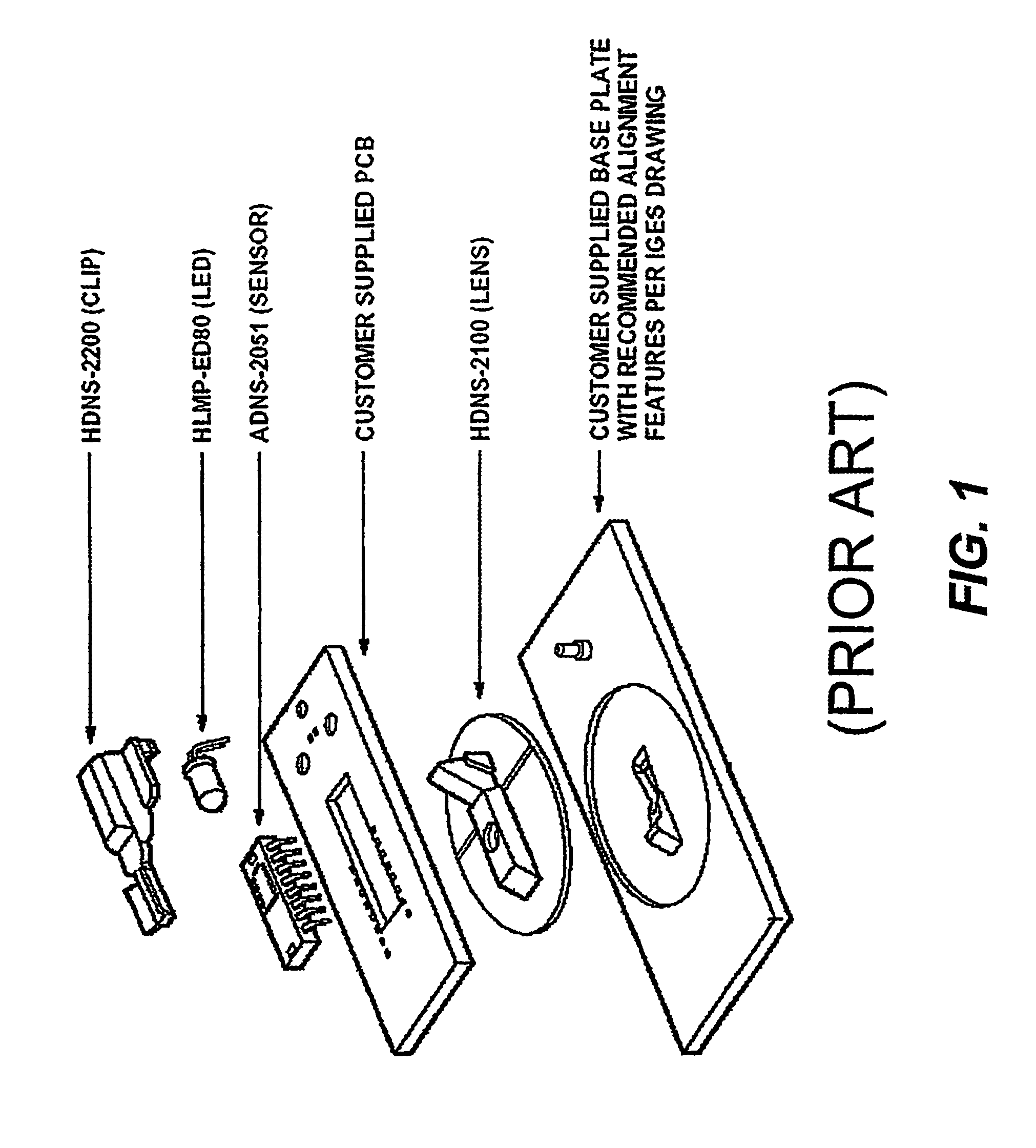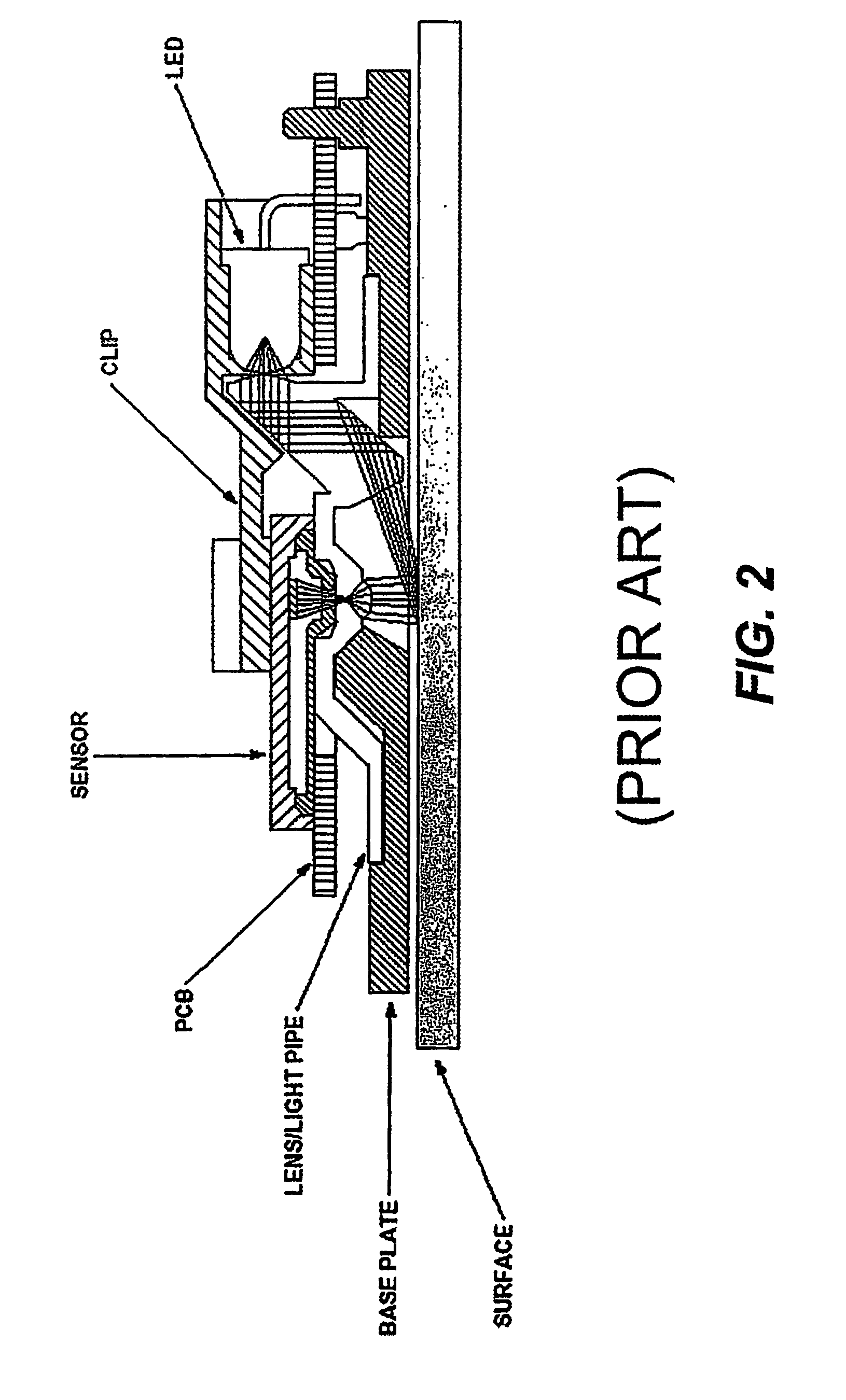Cursor control device
a control device and cursor technology, applied in the field of input devices, can solve the problems of unoptimized use of work surface area, one size and shape does not optimally fit all users, and requires considerable work surface area, so as to optimize the dynamic range of the first sensor
- Summary
- Abstract
- Description
- Claims
- Application Information
AI Technical Summary
Benefits of technology
Problems solved by technology
Method used
Image
Examples
Embodiment Construction
[0086]A cursor control device 10 will first be described with reference to FIG. 3, which shows a generalized block diagram displayed schematically as a side cross-sectional view of a panel-mounted device in order to indicate the general relationship between the elements of the device. The device has a housing 50 which can be held into a hole through panel 100 by one or more attachments 58. Light source 70 emits radiation at a wavelength to which the image sensor 80 is sensitive. Illumination optics 40 redirect and focus the radiation onto optical object plane 300. This object plane 300 is arranged to be proximate or superimposed with a top surface of a dome 30, which provides an optical window. Preferably, in an industrial environment or the like, the dome seals the optical system from the environment as well as provides tactile and visual features with which the user interacts. Imaging optics 88 form a real image of the object plane 300 on the photosensitive portion of image sensor...
PUM
 Login to View More
Login to View More Abstract
Description
Claims
Application Information
 Login to View More
Login to View More - R&D
- Intellectual Property
- Life Sciences
- Materials
- Tech Scout
- Unparalleled Data Quality
- Higher Quality Content
- 60% Fewer Hallucinations
Browse by: Latest US Patents, China's latest patents, Technical Efficacy Thesaurus, Application Domain, Technology Topic, Popular Technical Reports.
© 2025 PatSnap. All rights reserved.Legal|Privacy policy|Modern Slavery Act Transparency Statement|Sitemap|About US| Contact US: help@patsnap.com



